July 2019
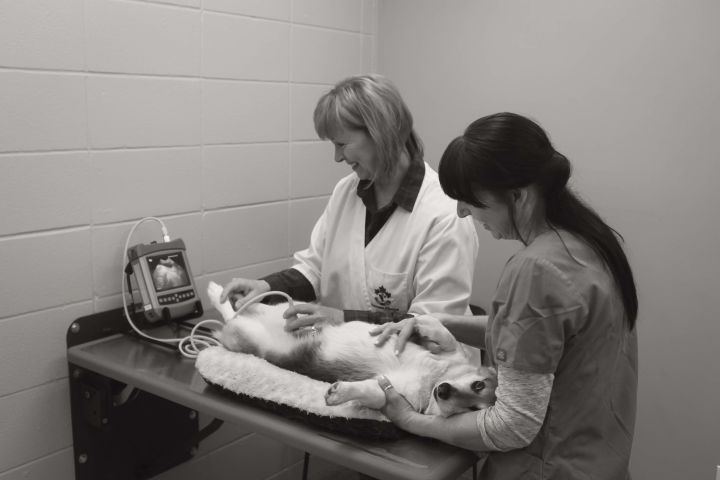
Companion Animal
For companion animal examinations, the 6.5 MHz C20 micro convex is the most commonly used probe. Routine examination of the bladder, uterus, abdomen for fluid, thorax for fluid, can be done with the Flexx with this 6.5 MHz probe. The 3.5 MHz C60 T handle probe may be used for large dogs and the 7.5 MHz L40 T handle probe is recommended for very small dogs, tendons and cats.
Having the right ultrasound equipment for mixed animal practice is a challenge. Providing bovine, equine, small ruminant and companion animal ultrasound examinations for your clients is a challenge. Multiple probes are involved as the organs and body systems examined are all very different in shape and size between species. A mixed animal practitioner may be called upon to exam equine tendons, pregnancy test goats, exam a dog for ascites and pregnancy test cows all in the same day! Having a multi-probe ultrasound unit in each mobile veterinary unit helps make the challenging days for a rural mixed animal practitioner much easier.
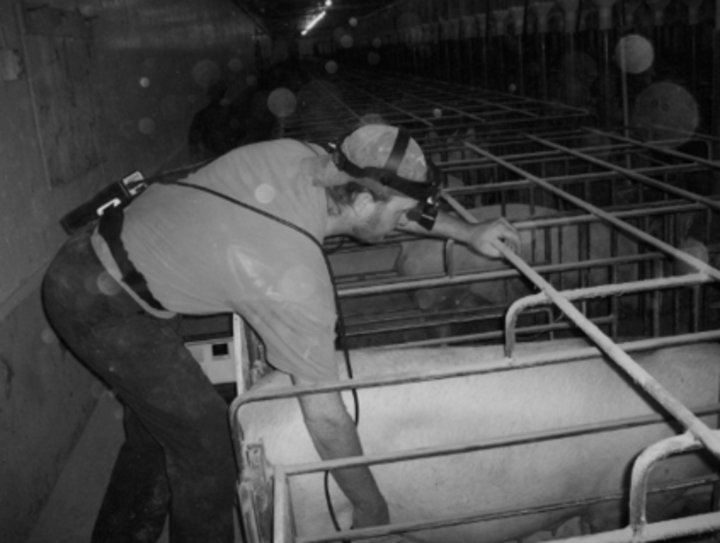
Swine
Pregnancy testing sows at day 21 to 28 is a very economical procedure in modern pork production. Sows are relatively easy to ultrasound when restrained in a crate. With more production switching to loose housing for sows, pregnancy testing is more of a challenge. The BoviScan S60 with 3.5 MHz C60 T handle probe is ideal for pregnancy testing sows transabdomenally in crates and/or loose housing. Most people prefer the Vista goggles for this job. The BoviScan S60 can worn with the waist strap or put in a backpack for added protection.
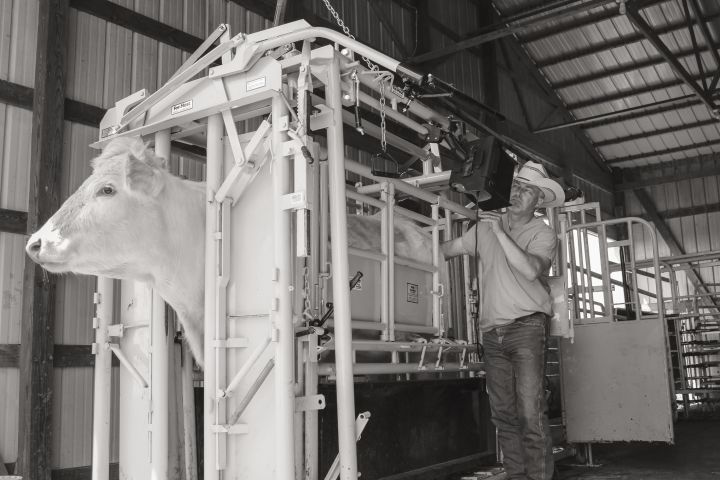
Beef
ReproScan ultrasound equipment is ideally suited for reproductive ultrasound in cow/calf and beef production, especially pregnancy testing and fetal aging pregnancies in beef cattle.
There are 2 main types of reproductive ultrasound on cow calf operations. The first is the traditional “arm in cow” ultrasound that traditionally has been used for early pregnancy diagnosis and fetal aging (less than 120 days) and fetal gender determination in fetuses 58 to 80 days. The second type of reproductive ultrasound is extension arm ultrasound. With ReproScan equipment, this is done with a 4.0 MHz convex rectal probe on the extension arm (ReproArm). With the larger field of view provided by the 4.0 MHz convex rectal probe, more of the fetus can be seen at one time and pregnancy testings and some degree of fetal aging can be done from 30 days and up.

Other Species

NCBA Recap
The 2019 Cattle Industry Convention and NCBA Trade Show was one for the books. The convention was held January 30- February 1, 2019, in New Orleans, LA. More than 8,000 cattlemen and women made there way to the largest cattle industry event in the country.

The NCBA Trade Show held in conjunction with the convention had 383 exhibitors with acres of displays. The event provided attendees with education, information, fellowship and decision-making opportunities for the industry’s leading members.
ReproScan is already looking forward to #Cattlecon2020 Deep in the Heart of San Antonio, TX! We hope to see you February 5-7, 202,0 at booth #2326.
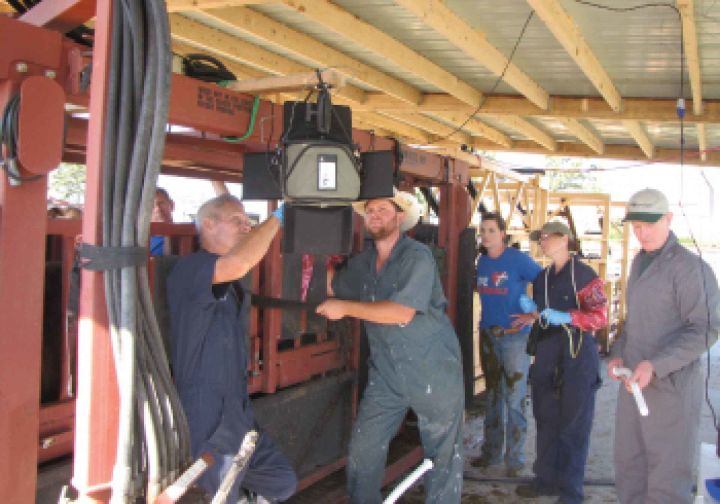
Training Opportunities
Pregchecking season is underway in many parts of the country. Do you want to learn to ultrasound your cattle, or sharpen the skills you already have? ReproScan collaborates with several trainers to provide various training courses.
Participants of Dr. Craig DeMuth’s most recent course, July 20-21, 2017 in Stratton, Colorado, had the opportunity learn and discuss different ovarian abnormalities, the diagnosis of twins, the diagnosis of fetal death and more in the lecture. The following morning at a local ranch, each participant had the chance to develop their arm in cow ultrasound technique and their convex probe extension arm technique. With numerous cows at different stages, the wet lab provided ample opportunity for each person to practice determining fetal age and fetal sex.

Greetings From Iowa - We Moved!
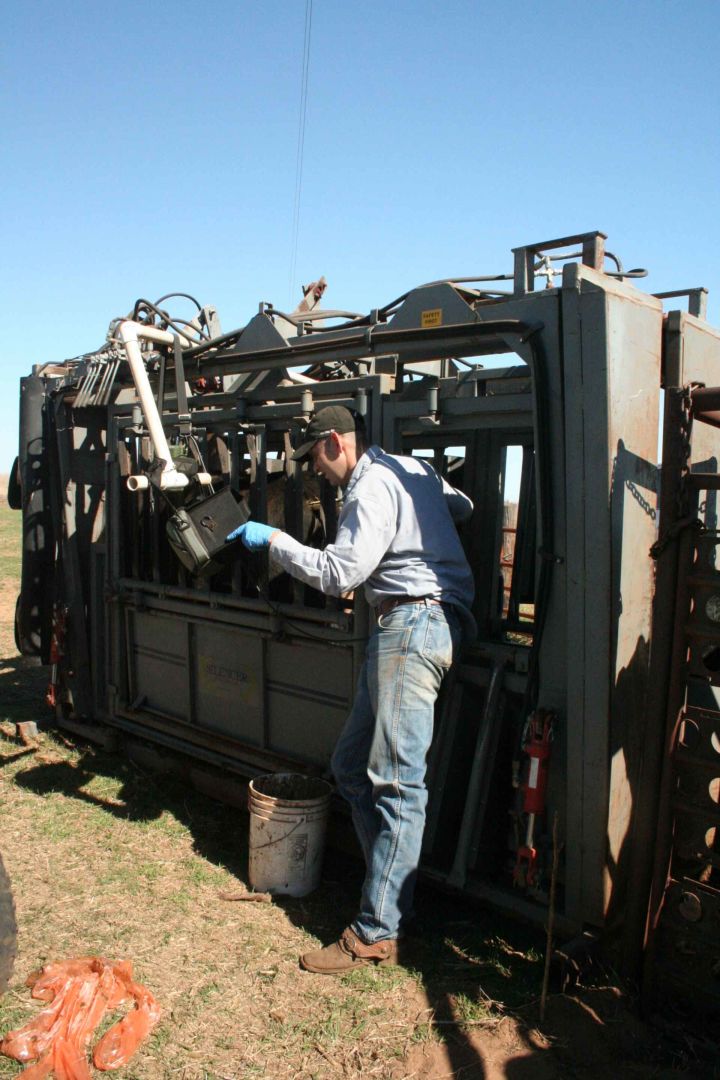
Customer Feature - Hutson Angus
Hutson Angus is a large registered Angus operation based in Elk City, Oklahoma. Hutson Angus was introduced to ReproScan ultrasound equipment at the National Angus Convention in 2015. They discovered that ultrasound technology would be more efficient and provide better management tools than their method of preg testing at the time which was the BioPryn blood test.
Joe Sanders, the herd manager at Hutson Angus, went to The Graham School and spent one day with Frank Graham to learn to ultrasound. After going through setup and features of the machine, they ultrasounded cows until Joe was prepared to take the technology back to the ranch.

Equipment Care - Tips for Saving Battery Life
We have all experienced it, that dreadful moment when you turn on your machine…nothing. Your battery is dead. There are many reasons this occurs: forgetfulness, extended periods without use, extreme temperatures, battery age etc. What can you do to prevent your batteries from going dead? The simple answer is remembering to charge them, but there are other ways to elongate your battery’s life.
ReproScan’s equipment uses Lithium ion batteries. To learn more about your lithium ion battery, follow this link to the Battery University. Commonly, ultrasound equipment gets used seasonally. Therefore, the batteries often are not used for several months; this can be detrimental to the batteries. ReproScan recommends that you periodically charge your battery during the off season to keep a partial charge in the cells. Additionally, testing your batteries and chargers before the first day back may save you a headache later. Storing the equipment safe from extreme temperatures and large temperature swings will increase the longevity of the batteries.
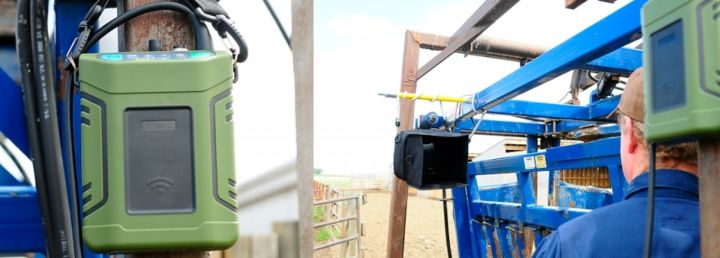
Safety Precautions When Using Ultrasound
Let’s talk safety at the chute. Please continue this conversation with your co-workers and clients. It is a topic that needs to be discussed regularly.
Firstly, there is the safety of the person operating the ultrasound to consider. That is probably you if you are reading this and your safety is important to a lot of people. Make sure that you have enough training and experience for the different type of ultrasound scanning that you are asked to do. If you are not comfortable in some situations, discuss this with colleagues, staff, farmers and ranchers and make the changes necessary before proceeding.